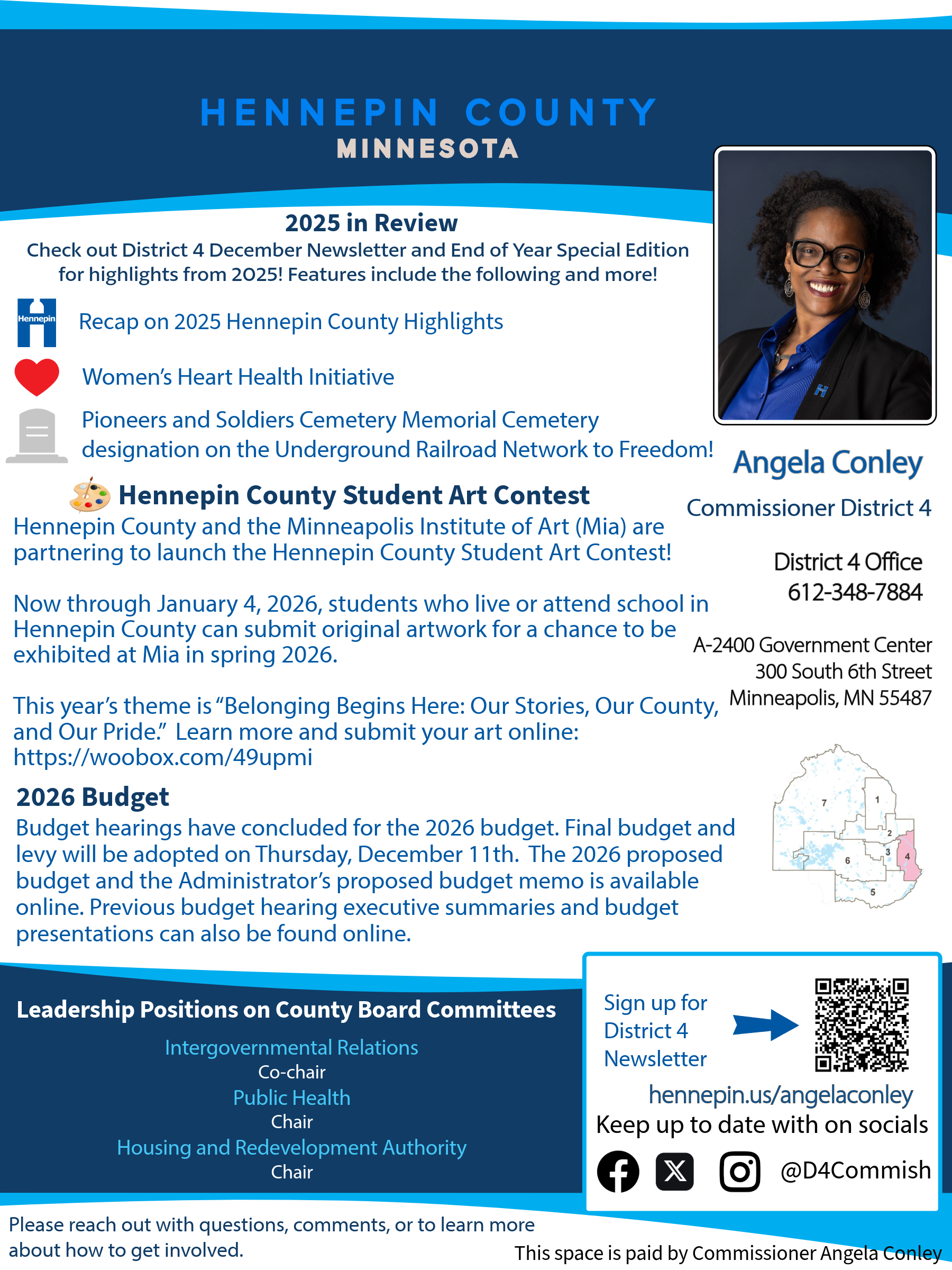Response to 2744 and 2740 12th Avenue Proposed Development: Ensuring Gentrification and Income Inequality by Policy and Design
By SUE HUNTER WEIR
Reprinted in the alley by permission of the author
The City of Minneapolis is well known for expressing concern about gentrification and income inequality—one of the dubious categories in which we lead the nation. These plans appear not to have taken into account the demographic makeup, and therefore the needs, of the people who live here. There is undoubtedly a need to have more housing for renters, but these designs are not the answer. I have listed some of the problems that jump out at me.
1) Inadequate parking. Regardless of what the city’s current policy is, the reality of life in Midtown Phillips is different. This is not, for the most part, a community of bicycle commuters. Our block (the 2700 block of 12th Avenue) is a block where most of the renters and owners are immigrant families. That usually means two working parents and several young children per household. Five of the houses on the east side of the street are duplexes with little off-street parking, and for those properties there are not two cars/vans per property, but more commonly four to six. Residents already have to pay for parking permits because of our proximity to a school, mosque, mall, and two major hospitals. Parking is at a premium. The notion that people will ride bikes if no parking is available is simply not true. (I say this as someone who walked from my house to the U every day for 30+ years and heartily supports the idea of bike commuting for those who are able).
2) Safety. 28th Avenue is one of the city’s busier streets and speeding is the norm. Twelfth Avenue is likewise heavily trafficked by residents, school buses, students’ parents, and people using the park. All of these amenities are great but they do mean that there is a lot of traffic. (About one out of every three or four bike bollards are flattened on any given day).
3) Proximity to public transportation. The bus routes are no longer safe. In order to access the #21, residents have to cut through the open-air drug marker on 12th and Lake. Likewise, the #14 on Bloomington is essentially an encampment where drug-use and drug-dealing is rampant. The last two times that I took the #5, there were gun-toting teens on the bus.
4) The design of the two proposed buildings is incompatible with the rest of the block and with most of the surrounding neighborhood. The majority of houses date from the 1880s to the 1920s, and share a similar style. The Midtown Neighborhood Association wrote design guidelines for the neighborhood that requested that all new homes should share that style—mostly in reference to front porches and detached garages. The developers for all three new builds on our block complied with those guidelines, however these plans share none of the architectural elements present in the neighborhood.
5) Inadequate play space for the children. There is simply not enough space for the number of children who will live in the 12 units (see comments about safety).
6) What do these properties have to do with continuing income inequality? Inappropriate design and inexpensive construction will undoubtedly have an impact on the surrounding properties. Many studies show that homes owned by people of color (all but three homeowners on our block) are artificially low in value, which translates into owners having less wealth to pass on to their children.
I think that it’s time for everyone to ask how city policy and design lead to gentrification, and how poorly-designed architecture undermines the social history and future economic well-being of its residents.









